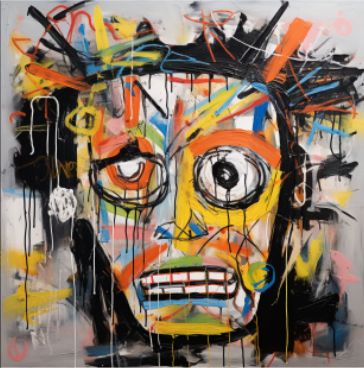In the evocative strokes of his latest collection, “Man in the Mirror,” Pierre Simone not only unveils the intricacies of his neo-expressionist style but also initiates a powerful conversation surrounding mental health, particularly within the realm of men’s well-being. As we explore the impact of emotive art on mental health awareness, delve into the investment landscape, and reflect on the enduring legacy of neo-expressionism, Simone’s recent merger with The London Art Exchange takes center stage as a transformative force for emerging artists.
Felix Valentine, heading the corporate desk at The London Art Exchange, adds a nuanced perspective to the intersection of art and finance. With a keen eye for emerging talent, Valentine emphasizes the importance of fostering symbiotic relationships between artists and investors. His vision aligns with a future where art not only serves as a catalyst for crucial conversations but also becomes an integral part of diversified investment portfolios.
“Man in the Mirror” is more than a collection; it is a narrative of introspection, vulnerability, and resilience. In a series of self-portraits, Simone courageously confronts his struggles with body dysmorphia, sparking a dialogue about the multifaceted challenges of mental health. This collection serves as a testament to the transformative power of art, offering a visual language for individuals to navigate the complexities of self-discovery and emotional well-being.
The movement of emotive art, exemplified by Simone’s “Man in the Mirror,” plays a pivotal role in reshaping conversations around mental health. By embracing vulnerability and authenticity, artists contribute to a broader societal shift in understanding and destigmatizing mental health challenges. Simone’s work becomes a mirror reflecting not only his personal journey but also an invitation for viewers to engage with their own experiences, fostering empathy and understanding.
Within the context of men’s mental health, Simone’s collection challenges traditional notions of masculinity and opens a dialogue about the importance of acknowledging and addressing mental well-being. By depicting the male experience with honesty and sensitivity, Simone contributes to breaking down stereotypes and encourages a more inclusive conversation about mental health.
Simone’s recent merger with The London Art Exchange adds an exciting dimension to his artistic journey. This collaboration not only provides a platform for his work to reach a broader audience but also speaks to the changing landscape for emerging artists. The financial opportunities arising from partnerships with entities like The London Art Exchange signal a shift away from the archetype of the struggling artist. Instead, emerging artists now have the chance to earn a living through their craft, making art a viable and sustainable career option.
The financial aspect of art investments is undergoing a significant transformation, and platforms like The London Art Exchange are at the forefront of this evolution. No longer confined to the stereotype of the starving artist, emerging talents have the opportunity to not only showcase their work but also forge financially rewarding partnerships. This shift not only benefits artists but also investors and collectors who seek to support and engage with the dynamic world of contemporary art.
As we ponder the legacy of neo-expressionism, Pierre Simone’s work demonstrates that the spirit of Basquiat’s era is not only alive but evolving. The emotional intensity, societal commentary, and bold individuality characteristic of neo-expressionism find a contemporary voice in Simone’s art. This continuity underscores the enduring impact of a movement that challenged conventions and continues to shape the artistic landscape today.
In conclusion, “Man in the Mirror” is not just a collection; it is a testament to the transformative power of art in navigating mental health challenges. As the movement of emotive art gains prominence, the financial evolution of contemporary art, as exemplified by partnerships with platforms like The London Art Exchange, adds a new dimension to the equation. The merging of artistic expression, mental health advocacy, and financial viability signals a promising era for both artists and investors, providing more reasons than ever to support art investments that contribute to the flourishing landscape of contemporary art.

